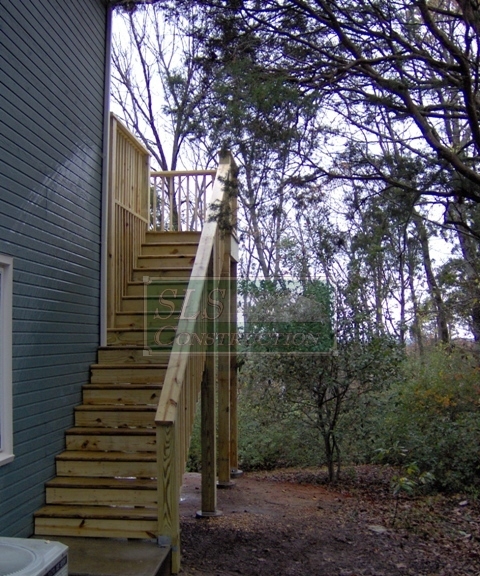 You can say one nice thing about lawsuits, they tend to grab ones attention & ask questions that they probably had never even considered before. For example after being quoted in a recent article saying “In some cases decking is installed in places where it wouldn’t be recommend…” I received the following email;
You can say one nice thing about lawsuits, they tend to grab ones attention & ask questions that they probably had never even considered before. For example after being quoted in a recent article saying “In some cases decking is installed in places where it wouldn’t be recommend…” I received the following email;
I am trying to decide what to replace current sunwood deck with — live in mountains of northern New Mexico with high sun exposure and heavy snows (some winters.) From your info and others the composites may not do well at this elevation (8500 ft) with high sun exposure? Do not get much moisture depending on monsoon season but snow can sit on deck for months. Should I stick with wood?
I got to say this is a pretty interesting question & one that I don’t have a real clear answer for. With that I do have some general guidelines to consider.
UV & Altitude
For the first part on altitude & UV exposure, all I can really do is recommend you contact the local manufacturers rep & see what they on that matter. I would also ask if there are any decks around that you could look at – the older the better. Shoot you may luck out & they may even be willing to offer a discount just so they can do a case study on it, assuming they see a need & market. With that I know of many builders in Colorado that use composites, though I am not sure they are at that altitude or are in the open (trees shading them, or a patio cover).
With that, you are looking for a product with a good UV protectant in it, which is something you would need to look at also even if you are going with wood. You see the issue with many “real wood” products (even redwood) is that the material available today is not as good as years past so sealing them is almost a given nowadays. This also a big concern in the area listed above as dry-rot can be an issue. If there is any way to shade the deck like trees or a patio cover that can help minimize any fading or other issues caused by UV light.
Snow & Ice:
Snow & Ice is not really an issue with your decking choice (especially as the temperatures aren’t great for fostering mold or mildew growth) though you may wish to look into a materials SR or slip resistance factor. I covered that in an article on Utilizing Universal Design in Deck Designs. With that one should not use ice melt & must be careful on the tools used to remove the snow from any product. The two biggest issues revolve around the deck structure – can it handle the load & what maybe falling on it from above (i.e. off the roof).
You may actually need to go with a sturdier structure (namely joists 12″ OC which some composites require anyways) & or more posts / beams. If your roof slopes towards the deck & heavy sheets of snow &/or ice fall off on it, you may have some issues as this may dent, crack or break many extruded products. While this can also happen with wood products, replacing a board or two is generally cheaper plus I think wood can be more forgiving.
Mold, Mildew & Water:
The problem affecting most composites is the claim of little to know maintenance & homeowners seeing mold or mildew on them. With that there are two main concerns for all types of decks – just how close to water are they (pools, ponds, standing water from drainage) & how much air space is there under them. Many composite manufacturers recommend a certain amount of air space under the deck to let them dry out (especially cap stock products). With that said, any deck without at least 8″ or more of ground clearance is just asking for problems & instead I recommend a paver patio or something similar in many cases.
In certain high moisture areas certain manufacturers will also shy away from their lower end products (which work fine in other areas) and instead will recommend a higher end board or one specifically designed for docks. The reason isn’t just because they want you to buy a more expensive product, it is because they know that there can (or will be) issues with that product in those areas. So pay attention & don’t believe that all products are created equally, because they aren’t
My Suggestion:
Personally I don’t think there would be any issues with an AZEK or higher end TimberTech product at that altitude, but I would still have to punt to the regional rep. If I was considering wood, while one could go with a Pressure Treated product, I would look more into redwood (though it is a soft wood & might not like falling ice) or other local durable materials like Western Red Cedar. One may also wish to look into IPE, which is a very hard dense wood & weathers quite nicely.
